Greetings. My name is Dave DeBaeremaeker and I am a toy photographer. The world of toy photography is a rather niche genre, but it is an interesting one, and it is growing in popularity.
Toys as an artist’s muse
Toy photography is taking photos with toys. In other words, the goal isn’t to take product shots of toys, but rather to use toys to create images that tell a larger story. Toys become the medium for the art.
The specific toys used by toy photographers are wide and varied. There are some toy photographers that use Pop! Funko figures with their exaggerated head sizes, dollar store army men and figures designed for railroad model sets. Some toy photographers even make their own figures. However, by far the most common types of toys that are used are LEGO Minifigures and 6-inch action figures. Sometimes both at the same time.
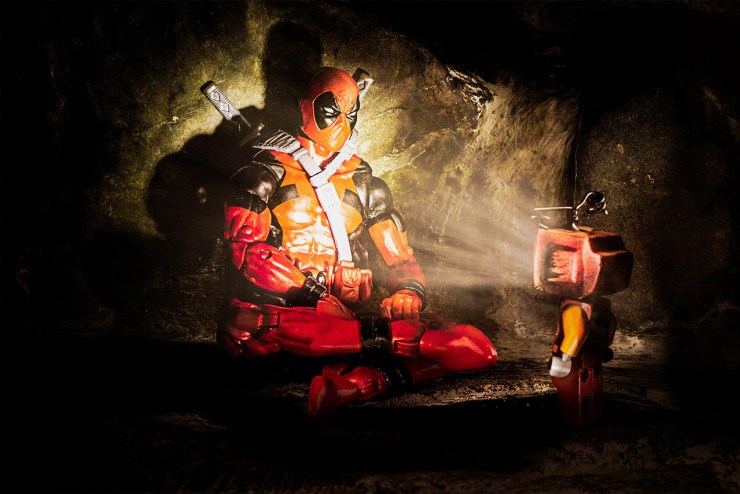
Lego Minifigures
The type of toy models used affects the general mood of the images. LEGO Minifigures are designed to be lighthearted. Even Minifigures based on evil characters like Darth Vader end up having a lighthearted childlike feel to them. As a result, the images produced with LEGO also tend to be more innocent and lighthearted.
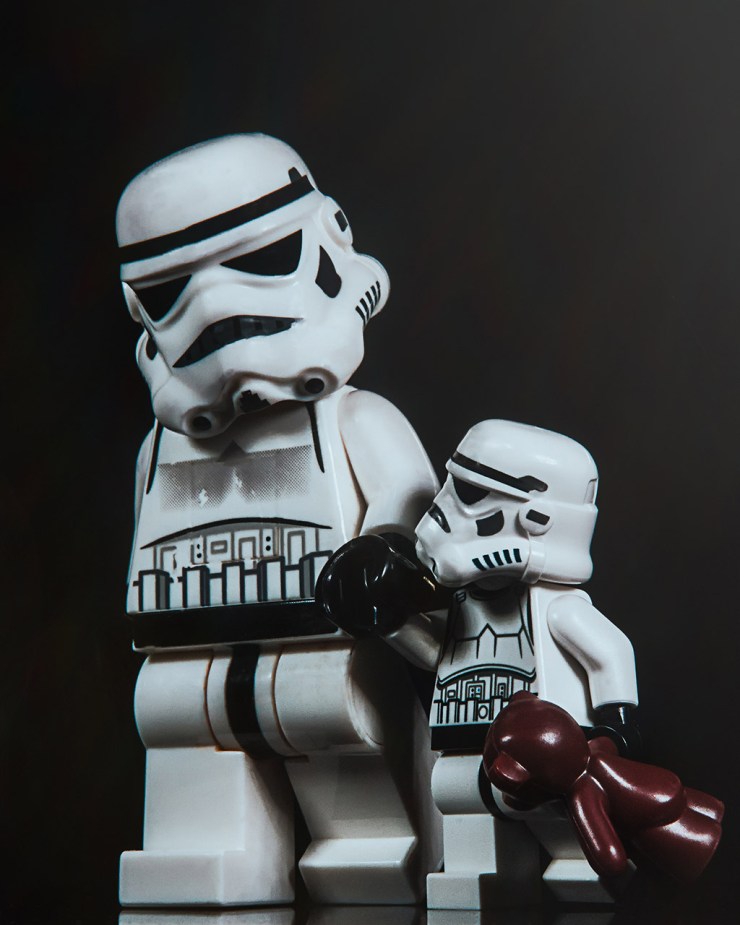
Realism
However, it is possible to make more realistic images with LEGO. Personally, I find that to be one of the most interesting aspects of toy photography — pushing the toys beyond their original style into new areas.
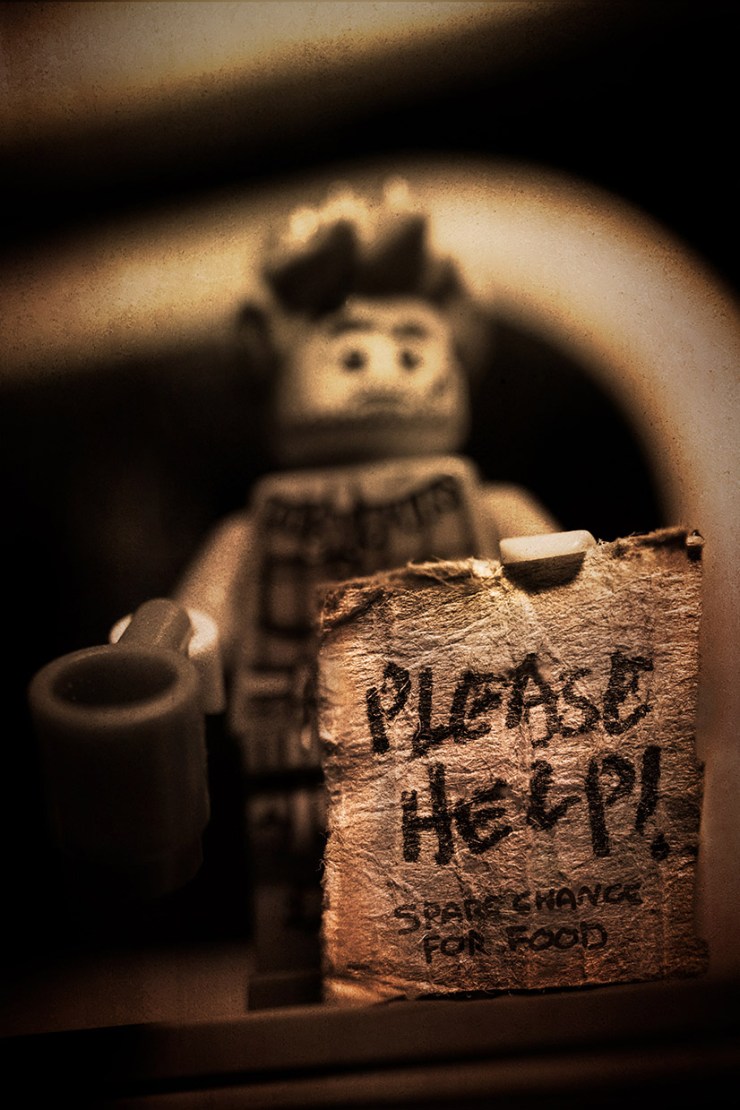
The trade off between LEGO and action figures is that of realism. While LEGO minifigs all look very similar to each other, action figures are designed to be more realistic. This means it is easier to create realistic scenes with action figures than LEGO.
Shooting toys offers a lot of unique opportunities for the photographer, both new and experienced. The most important one being the ability to create Hollywood style photos on a shoestring budget. LEGO Minifigures can be obtained in collectors series packs for $4 USD, or second hand from sites like Brink Link for $5-10 (though the more rare figures can go for upward of $100) Action figures from the Star Wars Universe, Marvel Cinematic Universe, the DC Extended Universe and most other titles, are cheap and readily available. They range from $10-$500, with most in the $15-$25 range. Both of my action figure lines of choice, Star Wars Black Series and the Marvel Legends collection, offer quality 6” figures with a lot of detail and articulation, for less than $20 for most figures.
These action figures can be used to create very realistic scenes, like this one with the Black Series Darth Vader, some fake snow and the addition of a lightsaber glow in Photoshop.
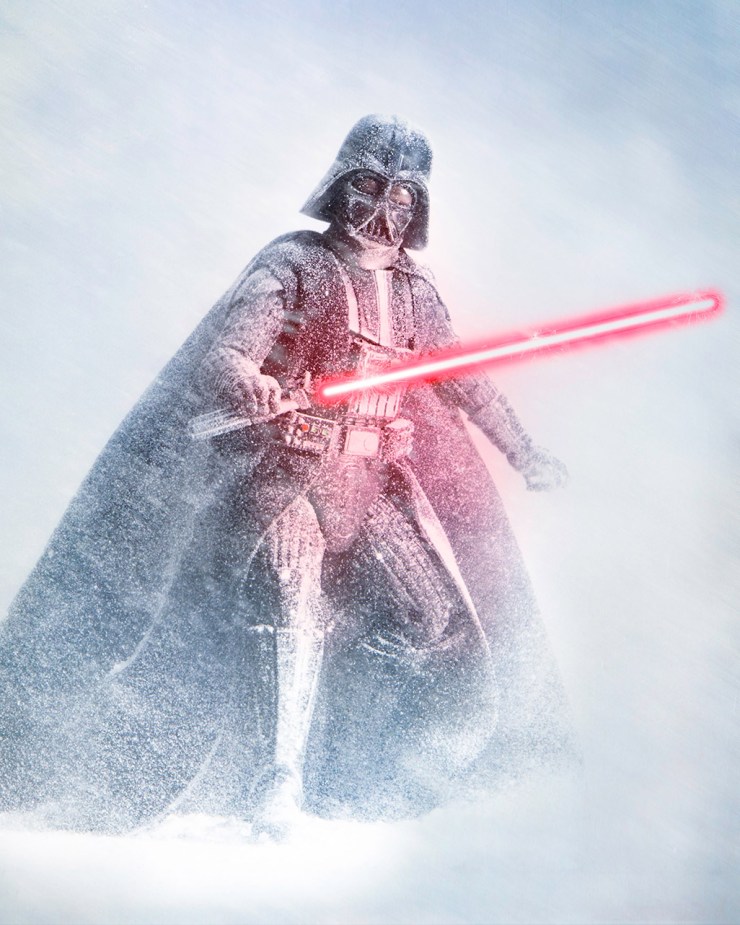
Action figures are zero cost models
Along with the cheap price of models, the equipment is cheap too. Almost any camera will suffice, from the fanciest DSLR to the average cellphone camera will work. In fact, sometimes a cellphone camera works best as it can get into angles that larger cameras can’t. For close-ups of LEGO Minifigures a macro lens does help, but the much cheaper option of extension tubes or macro lens filters often do the job just as well.
Lighting requirements are also cheap. Many scenes can easily be lit by any flashlight or desk lamps. For example, the scene below was shot with a 55mm lens with an extension tube and one $5 tactical LED flashlight.
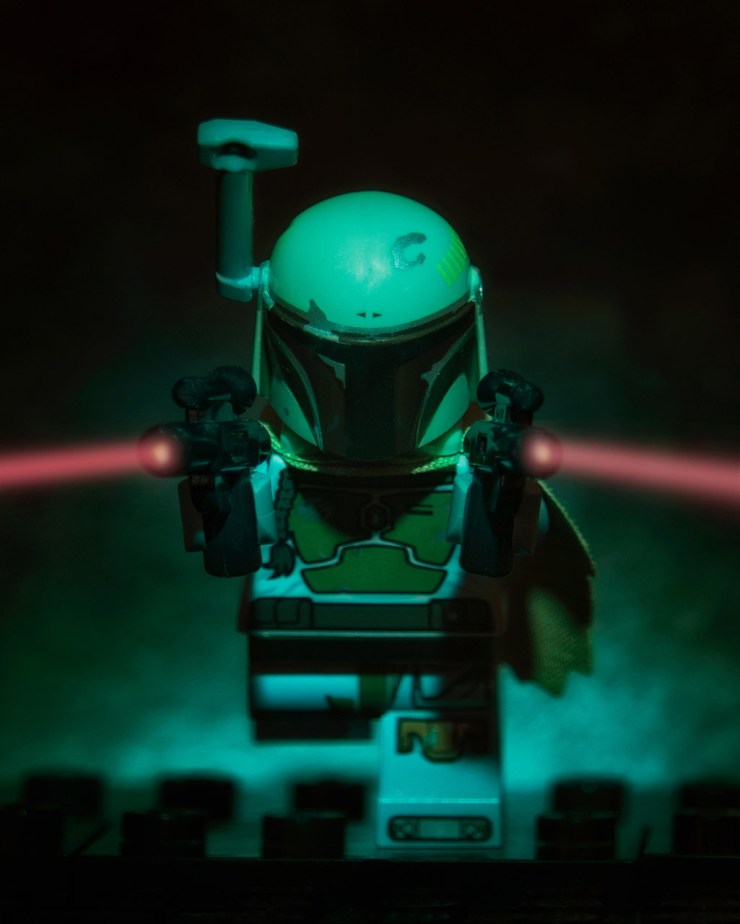
Big sets in small spaces
The final advantage of toy photography is that of scale. Since toys are small by nature, they don’t take up much room for storage, or in the studio. The vast majority of my own shots have been taken on a 3-foot by 2-foot area of the desk in my home office. This allows me to be creative in the smallest of spaces.
They are also very portable. Multiple action figures, plus lights and other tools I use to create scenes, easily fit into a camera bag. When it comes to LEGO minifigs, things become even more compact. This means I can bring dozens of models with me, and they all fit into the overhead storage bin on the plane (try doing that with a human model!) It also allows me to be creative when I am stuck in places like hotel rooms.
This shot was taken in a hotel room after I woke up in the middle of the night due to jet lag. I didn’t want to go outside, and I didn’t have anyone to talk to, so I pulled out some figures I had with me, a glass from the hotel room minibar and got creative. Lighting was provided by a desk lamp.
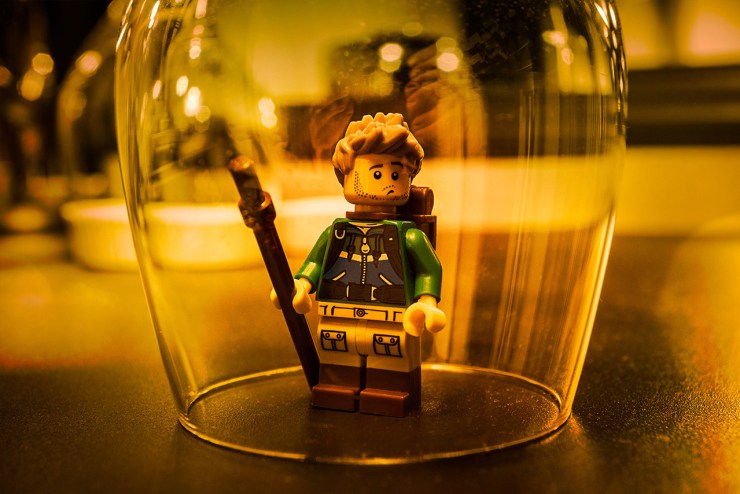
Scale matters in toy photography
Of course, as you can see, the scale of the toy does provide its own set of problems as well that shooting human models don’t have. The main one being that everything around the toy is not scaled the same as the toys. This means that many backgrounds and most props are gigantic compared to the toys.
Many toy photographers use this size difference to add charm and character to their scenes.
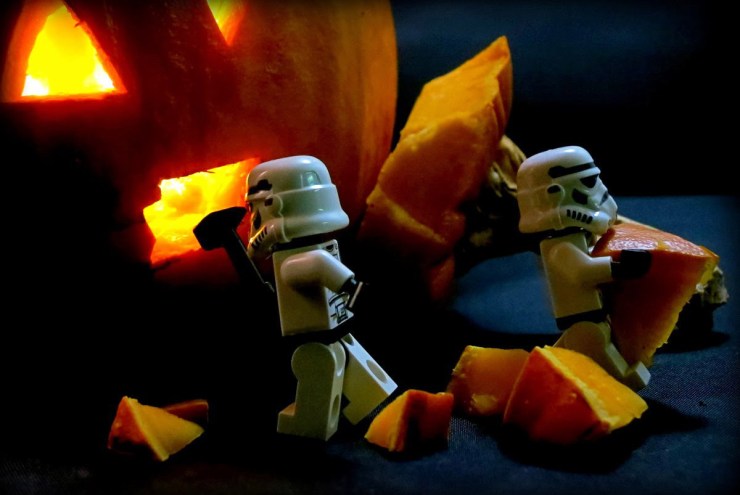
Others use tricks like forced perspective or build custom sets, to insert toys into a world that is properly scaled for them. This particular shot used forced perspective to scale the human-sized cabin in the background with the 6” action figures.
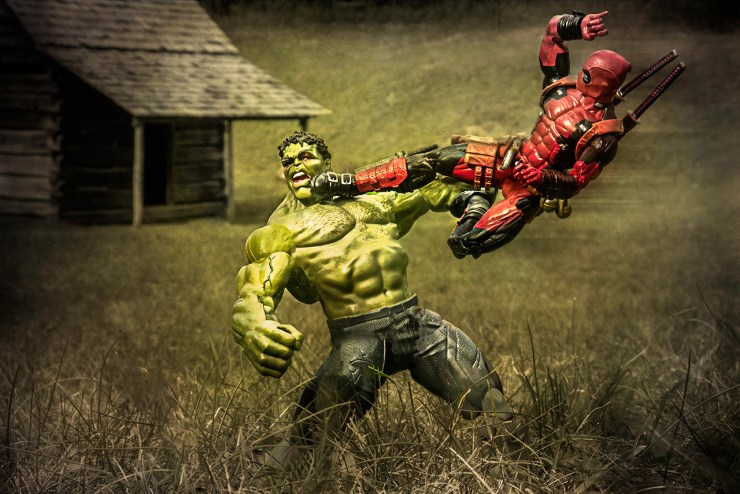
One of the largest downsides to toy photography is getting the toys into the pose you want. The average LEGO Minifigure has seven points of articulation, so their ability to be posed realistically is limited. The upside is that nobody expects LEGO to look realistic. The same is not true of action figures. Action figures are designed to look as realistic as possible, but they also tend to have more points of articulation, so it is much more likely they can be posed in a realistic way. However, with a little time and patience, it is usually possible to make a shot work with even the most stubborn figures.
Give it a try
So, as you can see, toy photography is an interesting world. It is cheap to get into, presents many challenges for both novice and experienced photographers and allows one to create almost any story they wish. Toys can be used to create high-quality images that range from lighthearted and humorous, to dramatic and provocative and everything in between.
So the next time you see a toy photograph hit your social media feed, I hope you’ll have a little more idea of what goes into creating it. More importantly, I hope you will consider trying your own hand at making a toy photo of your own. If you do, please tell me about it in the comments below.
Tell your story with the second annual Visual Storytelling Conference!
Experience four days of interactive, online training sessions featuring a range of educational content with experienced photographers and content creators. This free event kicks off with a series of technical boot camps to build essential skills, followed by live, online sessions on photography, video, business and social media. Join live from March 10-13, 2022!
